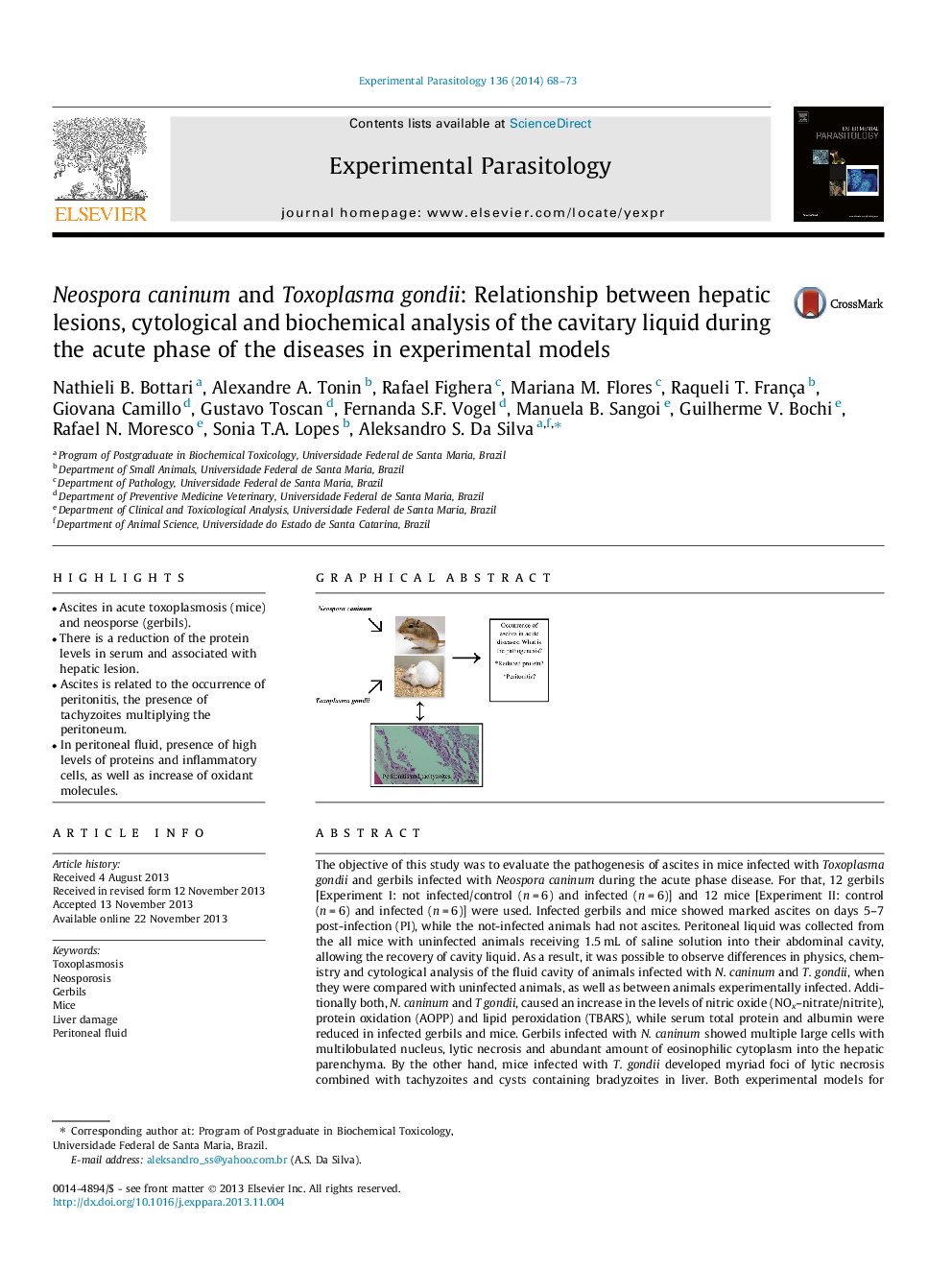| کد مقاله | کد نشریه | سال انتشار | مقاله انگلیسی | نسخه تمام متن |
|---|---|---|---|---|
| 4371149 | 1617028 | 2014 | 6 صفحه PDF | دانلود رایگان |

• Ascites in acute toxoplasmosis (mice) and neosporse (gerbils).
• There is a reduction of the protein levels in serum and associated with hepatic lesion.
• Ascites is related to the occurrence of peritonitis, the presence of tachyzoites multiplying the peritoneum.
• In peritoneal fluid, presence of high levels of proteins and inflammatory cells, as well as increase of oxidant molecules.
The objective of this study was to evaluate the pathogenesis of ascites in mice infected with Toxoplasma gondii and gerbils infected with Neospora caninum during the acute phase disease. For that, 12 gerbils [Experiment I: not infected/control (n = 6) and infected (n = 6)] and 12 mice [Experiment II: control (n = 6) and infected (n = 6)] were used. Infected gerbils and mice showed marked ascites on days 5–7 post-infection (PI), while the not-infected animals had not ascites. Peritoneal liquid was collected from the all mice with uninfected animals receiving 1.5 mL of saline solution into their abdominal cavity, allowing the recovery of cavity liquid. As a result, it was possible to observe differences in physics, chemistry and cytological analysis of the fluid cavity of animals infected with N. caninum and T. gondii, when they were compared with uninfected animals, as well as between animals experimentally infected. Additionally both, N. caninum and T gondii, caused an increase in the levels of nitric oxide (NOx–nitrate/nitrite), protein oxidation (AOPP) and lipid peroxidation (TBARS), while serum total protein and albumin were reduced in infected gerbils and mice. Gerbils infected with N. caninum showed multiple large cells with multilobulated nucleus, lytic necrosis and abundant amount of eosinophilic cytoplasm into the hepatic parenchyma. By the other hand, mice infected with T. gondii developed myriad foci of lytic necrosis combined with tachyzoites and cysts containing bradyzoites in liver. Both experimental models for N. caninum and T. gondii showed inflammatory foci and tachyzoites the peritoneum, which could be a major cause of ascites. Toxoplasmosis and neosporosis were able to cause clinical signs in experimental models with similar alterations in peritoneal fluid; however the toxoplasmosis histological changes were much more evident. Therefore, the pathogenesis of ascites appears to be directly related to liver damage, which strongly suggests alteration in the normal production of proteins as observed in this study, along with peritonitis.
Figure optionsDownload as PowerPoint slide
Journal: Experimental Parasitology - Volume 136, January 2014, Pages 68–73